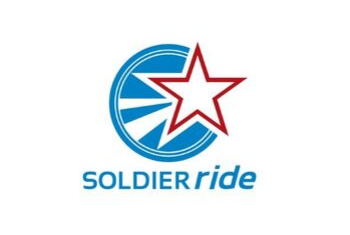Soldier Ride Across America: How Wounded Warrior Project Prepares Riders For Success

Soldier Ride Across America is a 30-day celebration of 15 years of journeys to recovery, transformations, and new connections made on the road. Before the bicycle spokes start turning, a safety net opens to embrace and support riders through every mile of the journey.
Soldier Ride Across America is not a competition. In fact, it’s known as a “no drop ride,” because no one is left behind. Support, encouragement, and teamwork win the day.
“We want to ensure warriors’ success by helping them prepare both physically and mentally,” said Adam Faine, Wounded Warrior Project® (WWP) Soldier Ride® manager. “It’s a huge challenge and a hard ride. We help them get in the right place in body and mind and be ready to support each other.”
The Logistics
Soldier Ride Across America starts in New York City and ends in San Diego. The coast-to-coast ride will take 30 days to complete.
“This ride is different from other Wounded Warrior Project-supported Soldier Rides that happen locally,” Adam explained. “We knew we would be covering 3,300 miles across the entire country, so we divided cyclists into three regional teams of 12, which will each ride one-third of the country.”
Within each team, there are four groups of three warriors with similar riding experience. WWP Soldier Ride organizers worked hard to group riders with similar abilities. That means that riders using adaptive bicycles ride together and intermediate riders ride together.
“Within their own groups, there are no real standouts,” Adam said. “No one has to struggle to keep up with their teammates. We encourage and support each other to be strong when you’re strong and be vulnerable when you need help.”
A running theme is “living the logo.” Riders are reminded that the WWP logo shows one soldier carrying another. “Sometimes you’re the soldier carrying another; sometimes you’re being carried,” Adam said.
The Gear
WWP provides state-of-the-art cycling equipment to injured service members at no cost, including adaptive hand cycles, trikes, and bicycles to accommodate various needs.
The riders invited to participate in Soldier Ride Across America came from of a pool of riders across the U.S. who have participated in other WWP rides. They attended a training camp together and received support while training on their own.
Soldier Ride Across America riders have meters installed on their bikes. The metrics are tracked on an app called Strava, used by mainstream cyclists and runners. It tracks how hard they worked, how many miles they covered, and how fast they were going. They also see their teammates’ training through the app and can give each other Kudos – a thumbs up within the app.
“We have been communicating by phone, text, and the Strava fitness app,” said Jered Holder, a rider in Solder Ride Across America based in McAllen, Texas. “I've been able to talk with my teammates about riding and equipment tips, and we've all been encouraging and motivating each other to stay dedicated to training for our ride.”
The app promotes a little friendly competition and, more importantly, support. “They offer each other support as each other’s training shows up in their Strava feed,” Adam said. “For example, I might be riding by myself in Florida, and everyone around the country can give me a thumbs up as I go.”
During training camp, warriors rode 200 miles in 5 days, testing their endurance on the road. “We put them through a similar level of fatigue as what they will experience on the actual ride,” Adam said. Within a safe environment, riders were challenged on how they would respond to the physical and emotional demands of the actual long-distance ride. “They had a chance to see how they react when they’re hungry and tired and away from home – we simulated the ride across America,” Adam said.
The Gain
Because Soldier Ride Across America is a relay event, there’s a bit of waiting time. The first group leaves on bicycles, and the next group goes to the swap point. WWP staff brings the next group of warriors to the meeting point in an RV. Warriors are encouraged to bring books and board games, and it feels a little bit like a military deployed environment. Riders have down time to hang out together in tents around the RV while their teammates get there. Their “war stories” tend to gravitate to bike riding.
“At camp, we have everyone’s meals, taking into account individual dietary considerations, and our bike tech goes through everyone’s bikes, gear, and new helmets they get for Soldier Ride Across America,” Adam said.
Safety is the top priority. Monitoring road conditions and making decisions about when to pull riders off the road are part of the preparations. Riders are driven to the next point if needed.
“We work with each individual before the ride to prepare them for a good experience that both challenges them and helps them grow,” said James Herrera, WWP Physical Health and Wellness director. “We have seen many positive outcomes of Soldier Ride, including mental health improvement, better sleep, lower stress levels, and a reduction in medications. We work for months to prepare them to succeed both mentally and physically.”
Get Soldier Ride Across America updates here: http://wwp.news/SRAA.
Contact: Vesta M. Anderson – Public Relations, vanderson@woundedwarriorproject.org, 904.570.0771
About Wounded Warrior Project
Since 2003, Wounded Warrior Project® (WWP) has been meeting the growing needs of warriors, their families, and caregivers – helping them achieve their highest ambition. Learn more: https://newsroom.woundedwarriorproject.org.